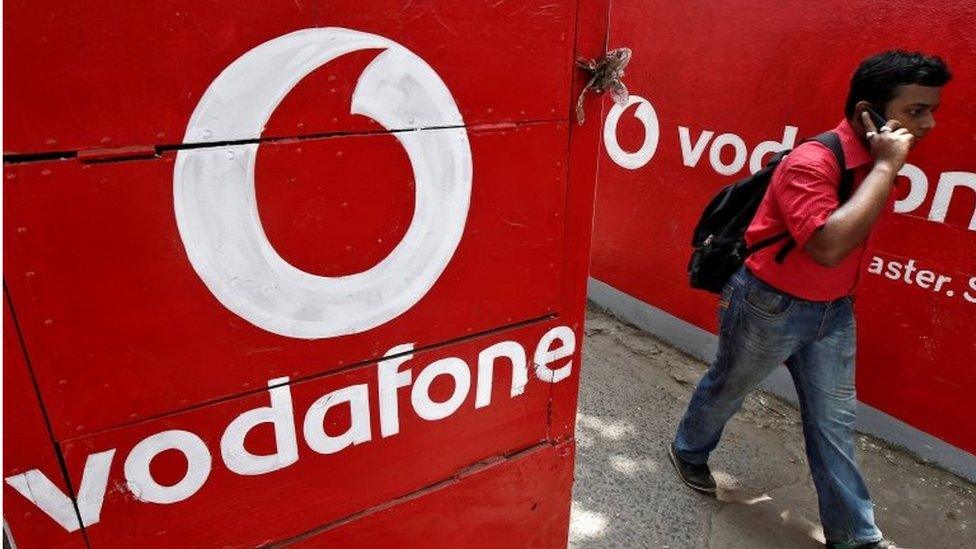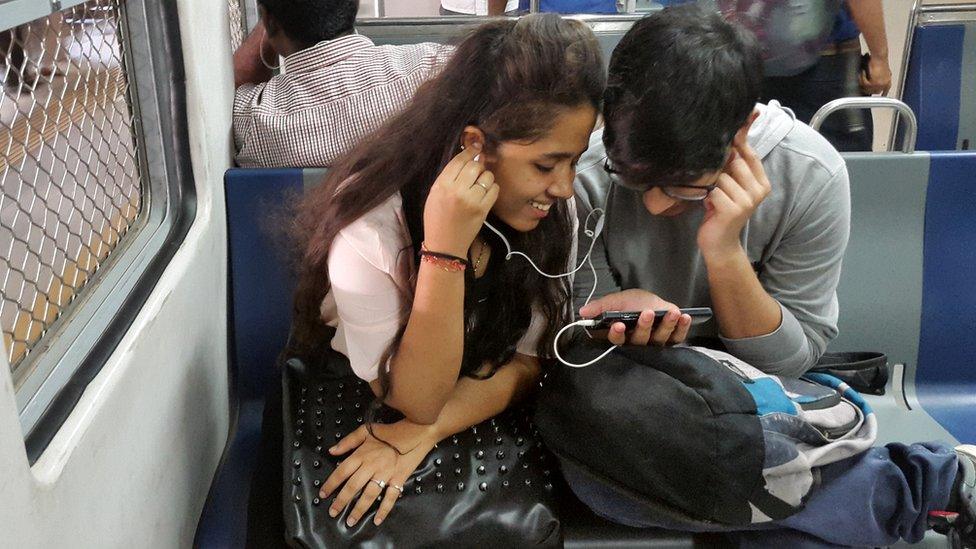India's mobile data hike 'higher than expected'
- Published

Vodafone India announced second quarter losses of $7bn
Indian consumers may no longer enjoy the cheapest mobile data rates in the world after three telecoms companies announced up to 40% rise in tariffs.
Vodafone Idea, Airtel and Reliance Jio together account for 90% of India's over a billion mobile subscribers.
The hike follows massive second-quarter losses by Vodafone Idea and Airtel.
Analysts say it is unlikely that these price increases will drastically affect data prices, especially given that India is a price sensitive market.
With India's mobile and data tariffs among the lowest in the world, and the average revenue per user below $2 a month, operators have been grappling with high government fees, and equipment and operating costs.
Last month Vodafone Idea and Airtel announced that they would increase prices after declaring second-quarter losses of $10bn (£7.7bn).
All the hikes were in the prepaid segment, which accounts for 95% of India's mobile subscribers. A premium post-paid segment, where users are sent a monthly bill, was unaffected.
Airtel and Vodafone Idea have raised tariffs by 15 to 50% across different offerings. Both have kept their prepaid voice and data packs largely unchanged, other than raising their cost.
Reliance Jio did not announce details, beyond saying that its new plans would be 40% higher but would provide "300% more benefits".
The new prices come into effect between 3 and 6 December for the different operators.
Jio gains most from the hikes because almost all of its subscriber base is pre-paid, while Airtel and Vodafone Idea have nearly 30% of their users in the post-paid segment.

Telecom sector 'collapse'
By Prasanto K Roy, technology expert
When Reliance Jio launched three years ago, it was the tenth telecom operator in a crowded market. Now, after a shake-up driven largely by Jio's price war over data and free calls, there are only four. The fourth, the state-run BSNL, is being kept alive by government largesse.
Experts have pointed out that ultra-low tariffs were purely the result of hyper-competition, with prices much lower than customers are willing to pay.
"These low prices are not sustainable," Rajan Mathews, head of the Cellular Operators Association of India, told the BBC in March. If operators have to survive and continue to make investments in network coverage, quality and new technology, he said, prices would have to go up.
Now, prices have gone up, and telecom industry analysts say this is good for the industry. Apart from giving operators a revenue boost of more than 20%, it could encourage users with multiple SIMs to give up inactive connections, reducing the cost of maintaining those connections as well as increasing the operators' average revenue per user.
But the price hike, say industry insiders, may not be enough to save the bleeding operators, even with the government agreeing to defer its dues from the operators. Those dues add up to $18bn.

A big chunk of these losses is because of the amounts owed by the operators to the government as license fees and spectrum usage charges, computed as a percentage of their revenues.
But while the companies want only telecoms earnings to be counted as revenue, the government wants all revenues to be counted, including sale of assets and interest earned on deposits. India's Supreme Court recently ruled in favour of the government.
In a letter to India's finance minister, external at the end of November, the leading trade body, FICCI, said the Supreme Court's ruling would lead to the telecoms sector's collapse. Others are more concerned that it could lead towards a monopoly.
Analysts also worry that the price hike itself, which is much higher than they had predicted, could slow down the rapid growth in India's internet users.
- Published15 November 2019

- Published18 March 2019
